Over 15 years ago, the materialization of German brand Propain Bicycles coincided with the release of their inaugural model, the Rage. A thoroughbred race bike since its inception, the Rage has undergone six iterations over the years, each sharing the same PRO10 suspension design. The latest Rage CF model was introduced in July 2021, after two years of development and feedback from Propain Factory Racing. With a new suspension layout, full carbon frame, mixed wheel compatibility, and updated geometry, Propain aimed to modernize and evolve its downhill platform to offer riders a versatile, robust, and capable race bike. And so far, the proof has been in the racing, with the likes of Phil Atwill, George Brannigan, and Luke and Will Meier-Smith racing their Rage CF to success this World Cup season. Tested during our 2022 Downhill Test Sessions, the Rage CF struck us as a bike that would not easily fit into one box but would excel in various situations under our three test riders.
Rage CF Highlights
- Blended carbon frame
- 215mm (8.4-inches) rear travel // 200mm (7.8-inches) fork travel
- 29-inch wheels
- 63-degree head tube angle
- Adjustable geometry via flip chip (allows for mixed wheel setup)
- Adjustable chain stay length: 445/460mm
- RockShox Boxxer Ultimate fork
- RockShox Super Deluxe Ultimate Coil shock (2023 model)
- SRAM XO1 7-speed drivetrain with 165mm carbon cranks
- SRAM Code RSC brakes with 220/200mm rotors
- 29x2.35-inch Schwalbe Magic Mary tires
- Newmen Evolution DH wheels
- 12 x 157mm rear hub spacing
- Threaded bottom bracket
- Internal cable routing
- ISCG05 chain guide mounts
- 1.5-inch steerer tube
- Sizes: medium, large (tested), X-large
- MSRP: $6,029 USD (Performance Build)
Strengths | Weaknesses |
|
|
Overview
When Propain set out to create the next Rage model, they prioritized building a race-ready downhill bike that was adaptable, durable, modernized, and fast. The standout difference with the Rage CF compared to its linage is the orientation of the rear shock in front of the seat tube. The new layout still utilizes Propain’s PRO10 suspension design but places the shock low and centered in the frame for better handling characteristics. And objectively speaking, the new layout looks incredibly refined, compact, and badass.


The PRO10 design features a floating shock with a one-piece rear swingarm. By ‘floating’ the rear shock between links, the rear suspension boasts exceptional small bump sensitivity, responsiveness, and traction, while a relatively high 38% progression rate mitigates harsh bottom-outs. Propain doesn’t provide any leverage rate or axle path graphs, but we would guess the Rage CF has a relatively high initial leverage rate that tapers towards the end of its 215mm of rear wheel travel. Propain does disclose that the axle path moves rearward initially before moving up and forward the rest of its travel.

With constantly evolving bike setups and race tracks, Propain sought to make the Rage CF future-proof with multiple points of adjustments. The frame features a straight 1.5-inch head tube to accommodate angle or reach adjust headsets. A flip chip in the upper pivot of the swingarm allows for a mixed wheel configuration, and a flip chip in the rear axle dropout gives riders a choice between a 445 or 460mm chain stay length. With our short four-day testing period, we only rode the Rage CF with 29-inch wheels in the short chain stay position. However, we compliment Propain for allowing riders to fine-tune setup to match different riding styles or race-day conditions.
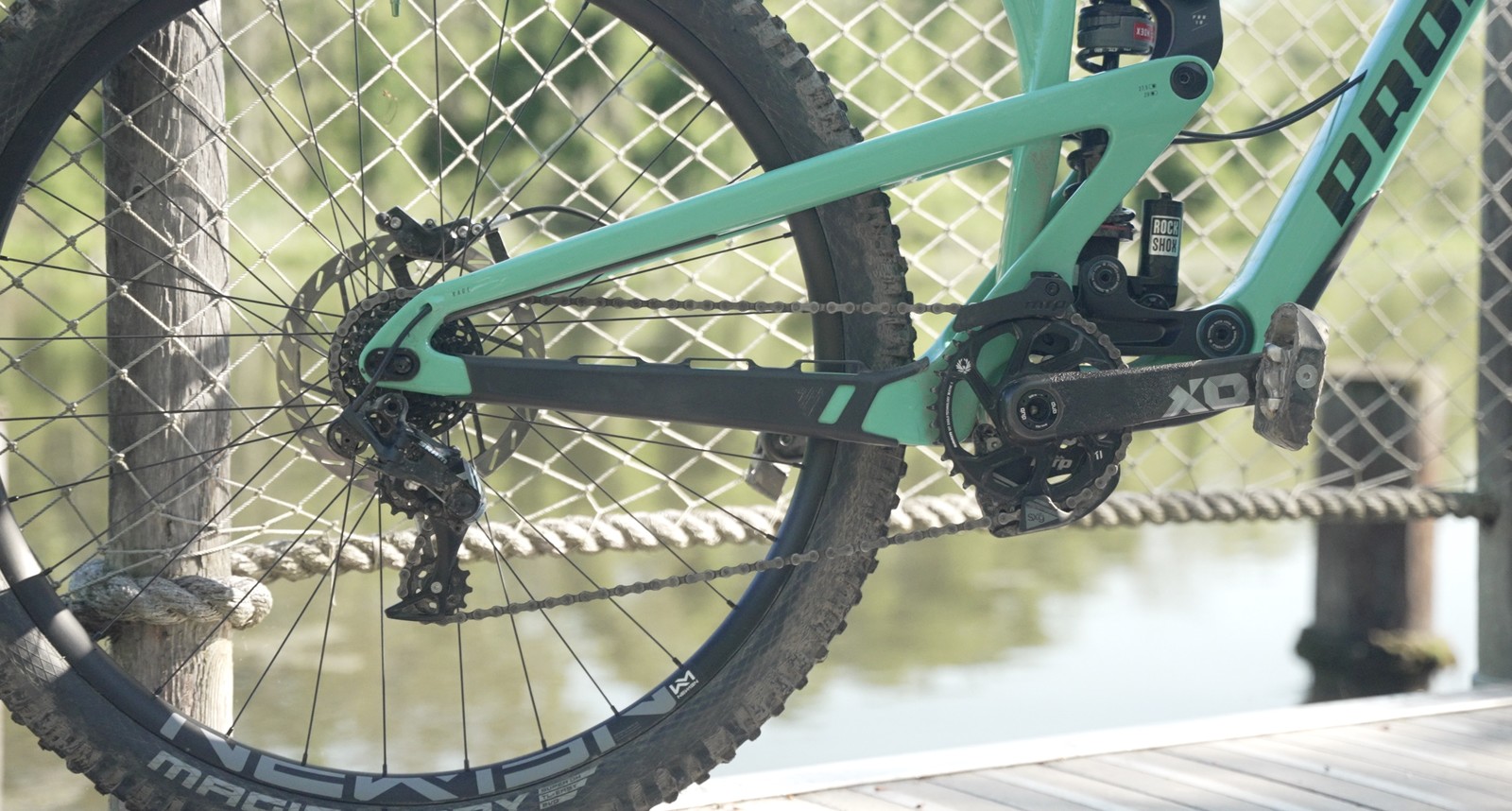
To offer riders the durability needed to handle seasons of downhill racing, the Rage CF features a sturdy frame constructed from a blend of carbon intended to balance weight, compliance, and stiffness. Propain also equips all pivots with double-sealed stainless steel bearings, and the downtube and chainstay protector is replaceable. Other details include guided internal cable routing with external mounting points and integrated fork bumpers.


If there is one update we can almost guarantee most new bikes will flaunt, it’s longer, lower, or slacker geometry. For the Rage CF, ‘modernized geometry’ means a longer reach and wheelbase across all sizes. However, compared to the other bikes in the test, the Rage CF had the shortest reach and wheelbase. Based on Propain’s recommended sizing for our test rider heights between 5-foot, 10-inches to 6-foot, 2-inches, we tested a large Rage CF with a 465mm reach, 638mm stack height, and 63-degree head tube angle.
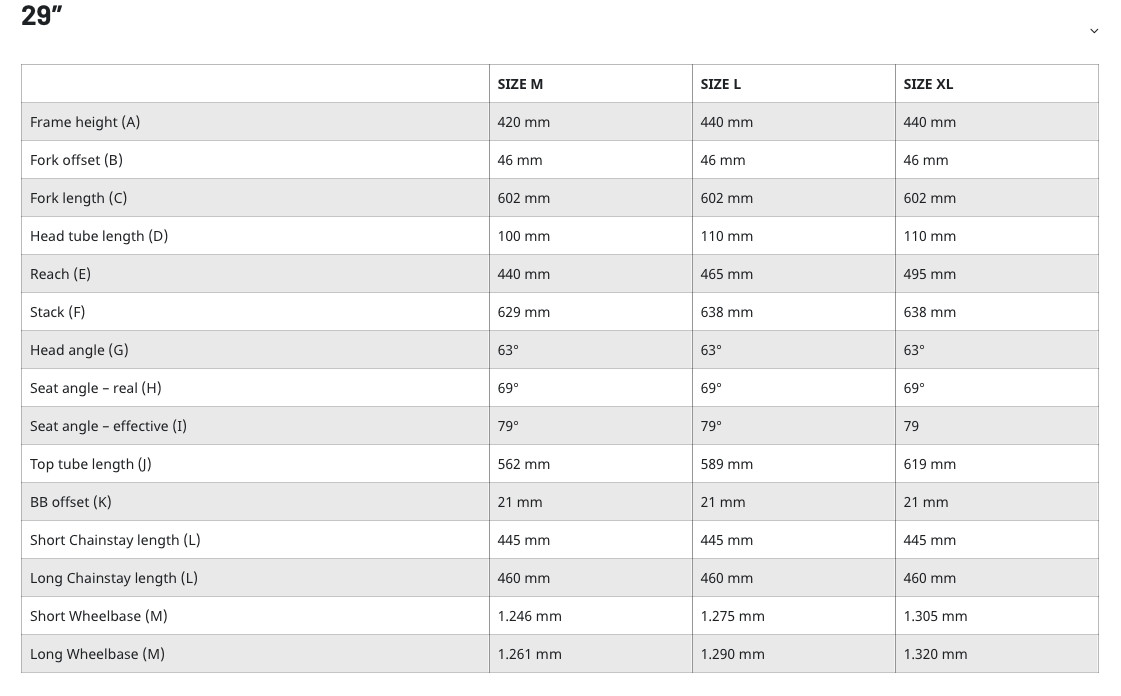
Propain announced the addition of US operations in February of this year and is still in the process of stocking the Rage CF stateside. When stock does become available, there will be three build kits to choose from. Lucky for us, Propain pulled some strings and tracked down one of their mid-range Performance builds that retails for $6,029 USD.
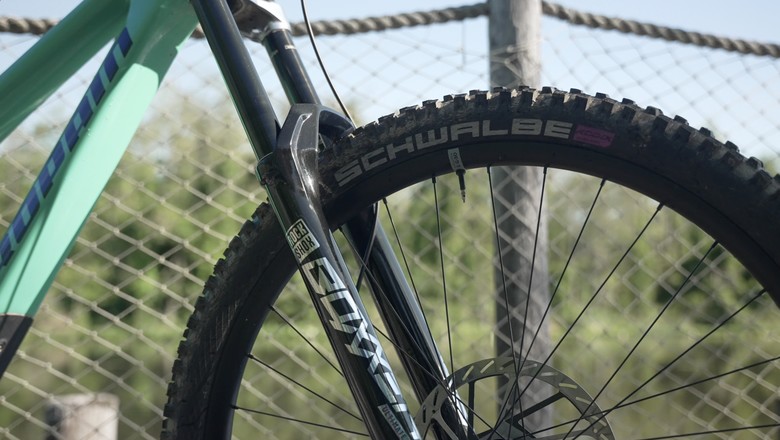
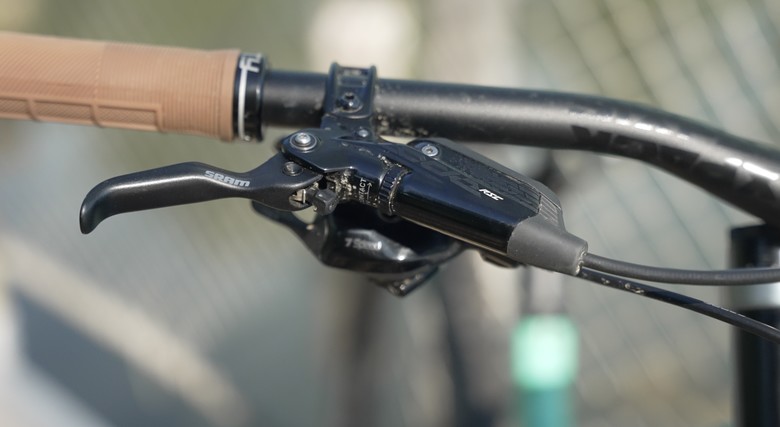
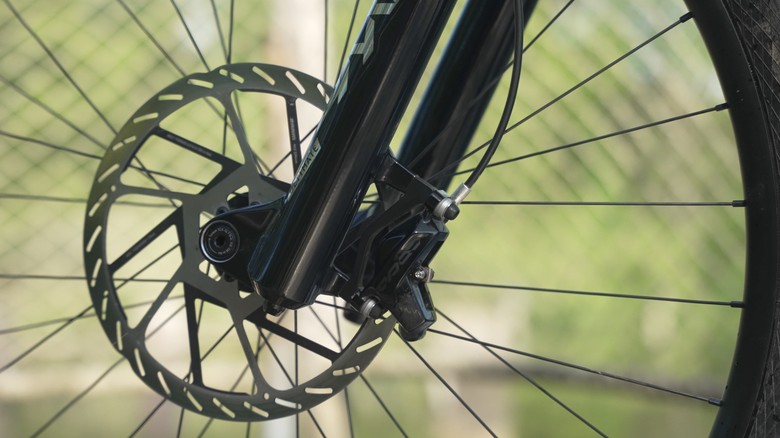
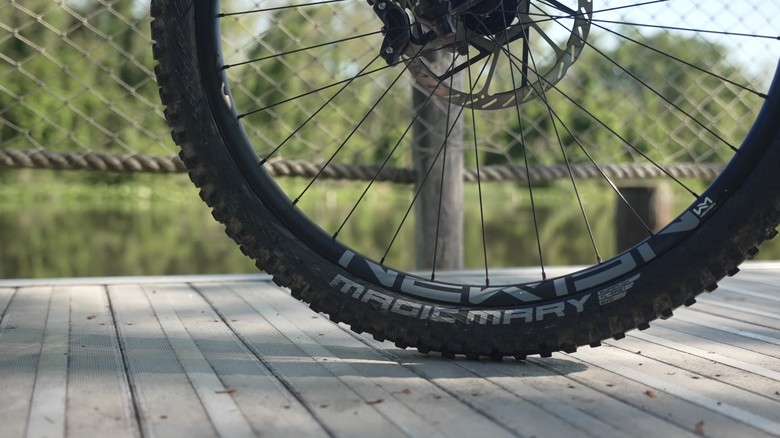
Compared to the other bikes in the test, the Rage CF sported the nicest build but shared similar components with the Nukeproof Dissent 290. However, the Rage CF featured SRAM’s premium Code RSC brakes as opposed to the Code R model found on the Dissent 290 and flaunted RockShox’s 2023 Super Deluxe Ultimate coil rear shock, complete with their new hydraulic bottom-out adjustment.
Meet The Testers
Piloting our Propain Rage CF test bike was Vital’s own Jason Schroeder and first-time testers Willem Cooper and Alf Garcia. With a few years between them and differences in riding style, setup preference, and body dimensions, the one similarity they all share is that it has been years since they lined up at a US National.
Jason Schroeder
| Alfonso 'Alf' Garcia
| Willem Cooper
|
|
|
|
On The Trail
For our 2022 Downhill Bike Test Session, we headed east and set up camp at Mountain Creek Bike Park in Vernon, New Jersey. Situated only an hour from New York City, Mountain Creek has hosted multiple national and regional events over the years, including the infamous US Open of Mountain Biking.

Best known for its impressive variety of trails and short gondola ride, the mountain offers a mix of rough, technical rock gardens, high-speed chunder, steep rock rolls, and flowy jump trails with ripping berms. With the ability to knock out multiple laps per hour, and accommodations conveniently located at the base, Mountain Creek served as the perfect testing ground to find out where each bike excelled or fell short.
Setup
During our four-day testing period, conditions ranged from dry and loose over hard-packed to soaking wet and greasy on top. Luckily, the dirt at Mountain Creek can handle some serious moisture, and the few afternoon thunderstorms we endured provided a window of hero dirt before summer conditions took over again. To quickly adjust spring weight between our three testers, we used Sprindex Springs to fine-tune shock setup. Each tester began with Propain’s recommended 20-30% sag and then made adjustments to match their rider style and preferences.
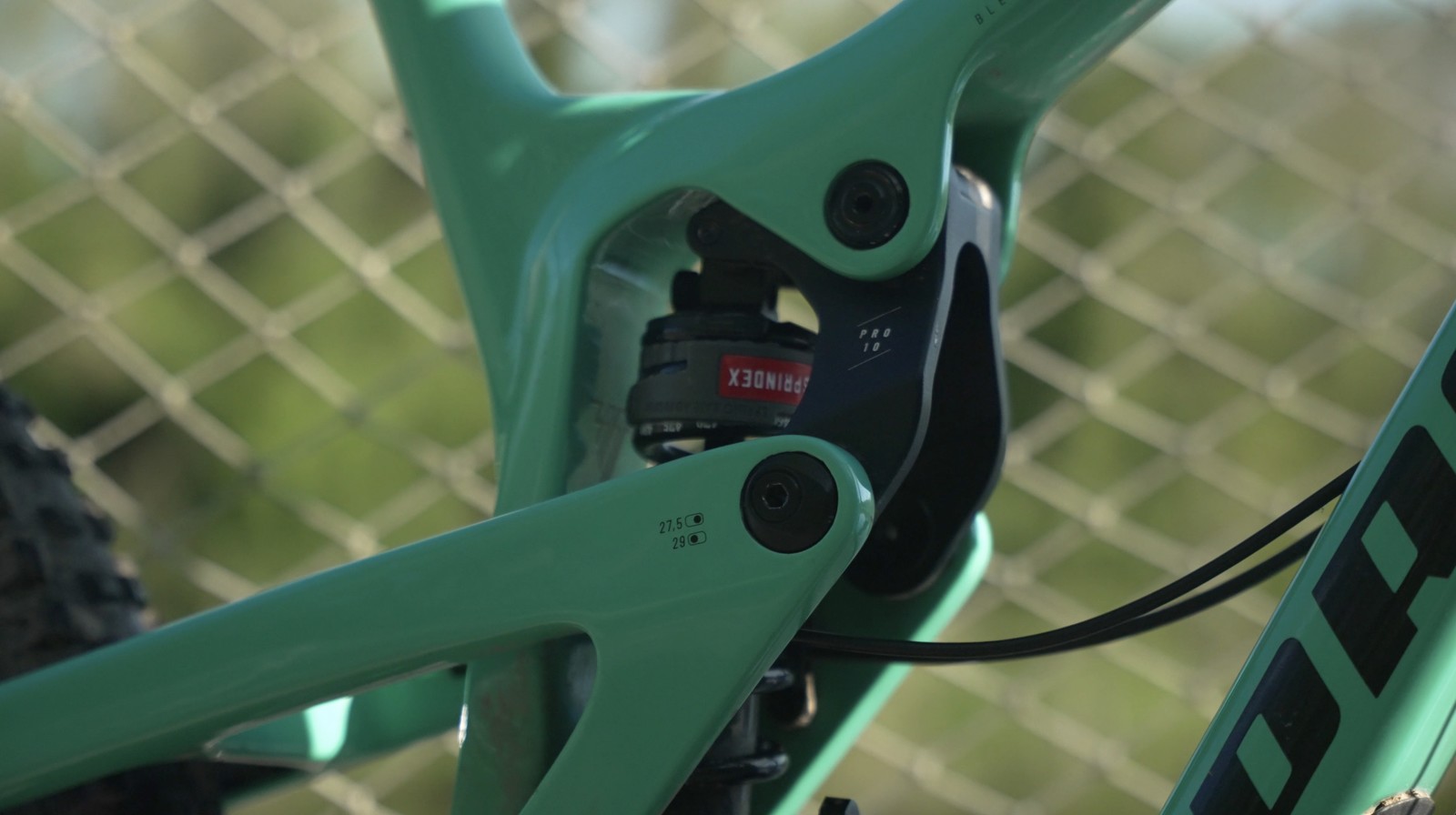
With a tight timeline to shakedown four downhill bikes, our goal was to find out where each excelled or under-performed, what nuances set each apart, and ultimately help riders understand which bike would be best for them. Below are on trail impressions from all three testers that offer a well-rounded and diverse impression of Propain’s Rage CF, along with standout and least favorite components from the Performance build.
Jason's Impressions
I was excited to ride the Rage CF after watching Propain's Factory riders shred them at the World Cups this year. The Meier-Smith brothers ride with a light and energetic style that the Rage appears to compliment, and they are constantly hitting lines that others won't. Hopping on the Rage for the first time, it felt smaller than the other bikes. The reach was a little cramped for my height, and the seat angle was incredibly steep. I know you don't sit much riding a downhill bike, but the forward seated position matched with the compact size gave me the impression the Rage would be maneuverable but might lack stability.

Out of the four bikes in the test, I felt the least comfortable trying to go fast and push my abilities on the Rage in demanding sections. Part of this had to do with the size large being a tad small for me, but it was primarily due to the frame stiffness that lacked enough compliance to absorb trail vibrations. There was also an apparent bushing issue with the Boxxer fork that limited the fork's ability to absorb small, high-frequency bumps, making it tough to hold on through braking chatter.
In slower, technical rock gardens, the rear suspension was super supportive and glided over deep holes and square edge impacts. The progression of the PRO10 design was noticeable, and I enjoyed how the Rage remained high in its travel, effortlessly carrying speed through flat rock gardens. Unfortunately, even though the suspension could handle some gnarly chunk and the bike wanted to keep moving forward, the rigidity of the frame caused the Rage to deflect and dance around, making it tough to hold a line. Where the Nukeproof Dissent 290 and Mondraker Summum Carbon MX had a very' pick and plow' mentality, the Rage CF promoted the same compression-smashing mentality but took more energy to hold onto the reigns. I struggled to keep the bike planted and tracking where I wanted, and once I began losing composure, my mistakes would compound, making it difficult to recover control.

Looking at the success of Propain's Factory World Cup racers in 2022, they clearly have no problem going ridiculous fast on the Rage. With that said, when I watch them ride, their bikes appear to dance underneath them more than most. Some riders might not be affected by such a sensation, but I'm lazy and like to hold on and let the bike manage the trail ahead. Therefore, I don't think my style jived perfectly with the Rage.
I might have struggled to keep the Rage going where I wanted in rough sections, but I had the opposite experience hitting jumps, trailside gaps, or rollers. The Rage rode very light and snappy, promoting creative riding and adventurous lines. The supportive rear suspension allowed the bike to maintain speed effortlessly, and I could pump and generate momentum out of trail features where the other bikes felt responseless and slow. While I can't throw whips like I once could, the Rage made me feel not half bad on jumps thanks to its short wheelbase and relatively short chain stay length. Out of the group, the Rage had the most nimble feel on machine-built features and was a joy to rally down flow trails. My only complaint was the frame's stiffness made me dread braking-bump-filled berms.
Standout Components
Newmen Evolution E.G.30 DH Wheels - If I'm being honest, I had not heard of Newmen before testing the Rage, but their Evolution E.G.30 DH wheels held up to our abuse without any dents, wobbles, or loose spokes to show. We had our fair share of wheel issues with the other bikes, so having at least one bike with worry-free wheels was refreshing. Ironically, the Evolution wheels were one of the only parts of the Rage that we didn't have to check every other run.
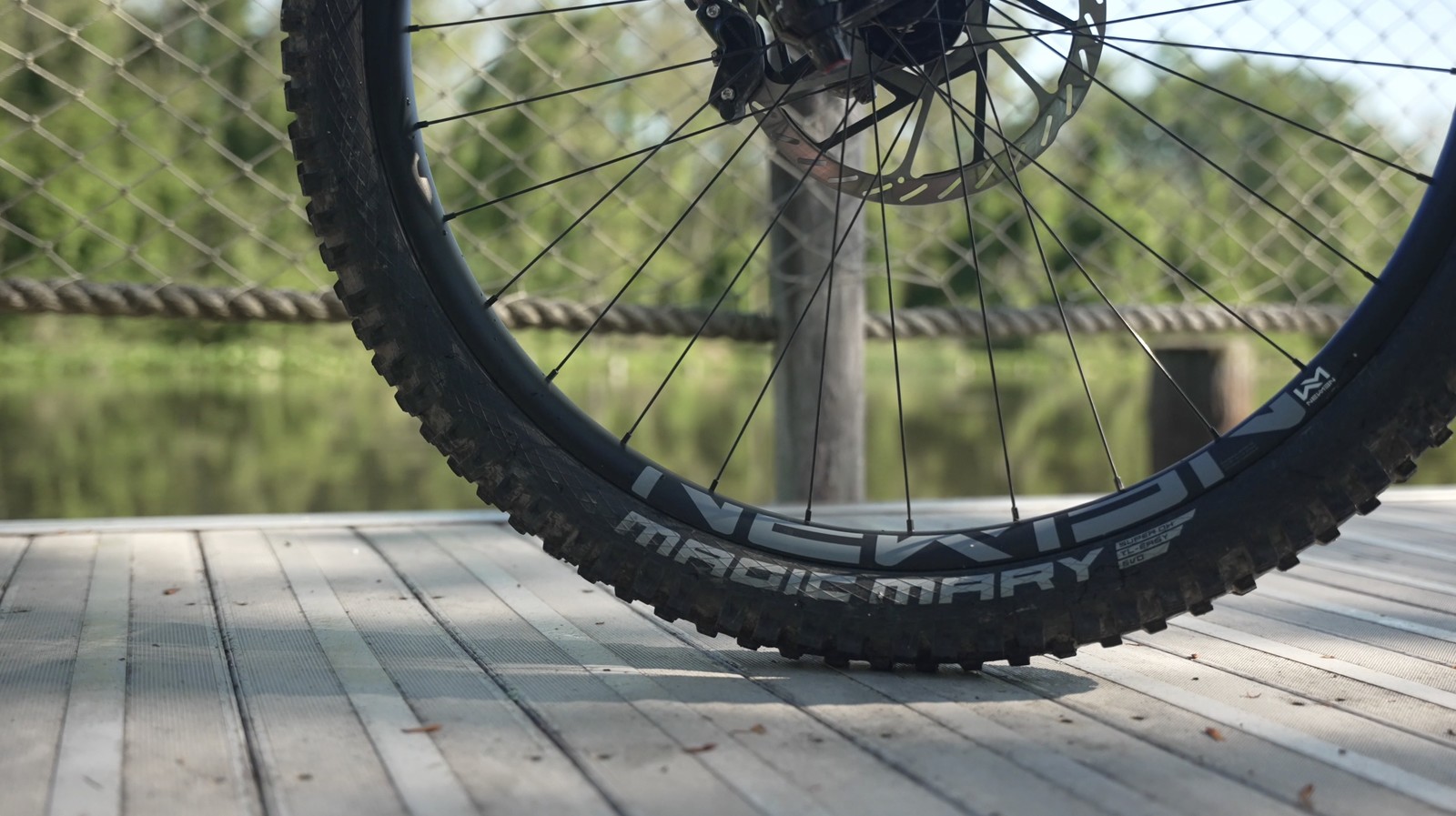
SRAM Code RSC Brakes - I've always been a fan of SRAM brakes, and the Code RSC model has been my go-to brake for the last few years. My favorite aspect of the brakes is their adjustability and modulation. The ability to fine-tune both lever reach and pad contact means you can keep the bite point equal and consistent as the pads wear. I also love how once the pads make contact with the rotor, there is still some lever throw, allowing for precise braking.
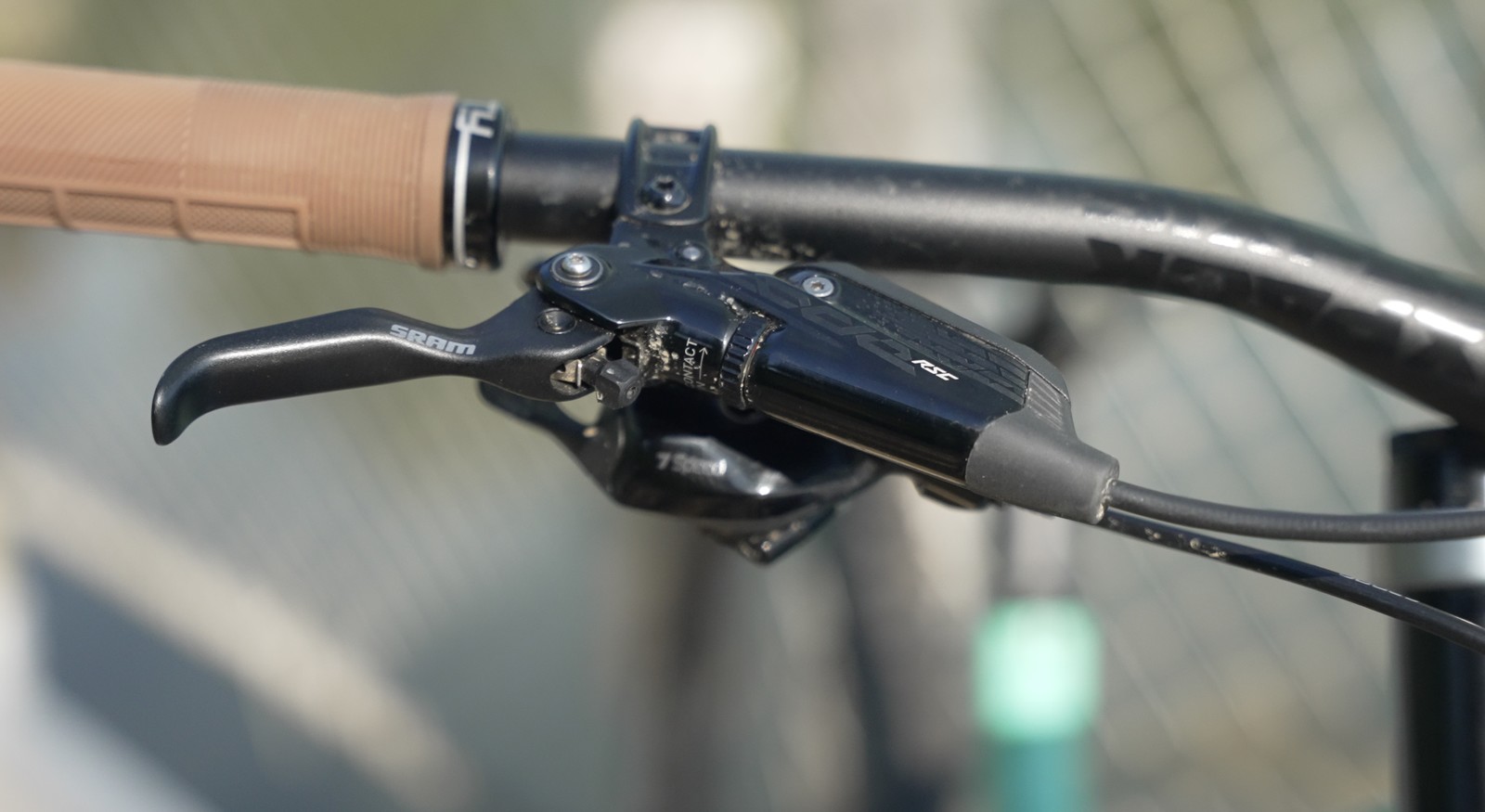
Least Favorite Components
Rage CF Frame - As someone who picks downhill bikes based on their ability to go fast and be competitive racing, the Rage did not provide the stability I'm seeking in a race bike due to the stiffness of its full carbon frame. I was also disappointed by how loud the bike was on trial and how quickly pivot bolts became loose. The large carbon tubes produced an echoing noise, and we had to tighten linkage bolts every other lap. The long seat stays also presented some lateral flex even with the linkage tightened. If you spend most of your time riding bike parks and prefer a bike with a ton of personality on flow trails, you won't be as affected by the energy required to keep the Rage CF on track in demanding sections.
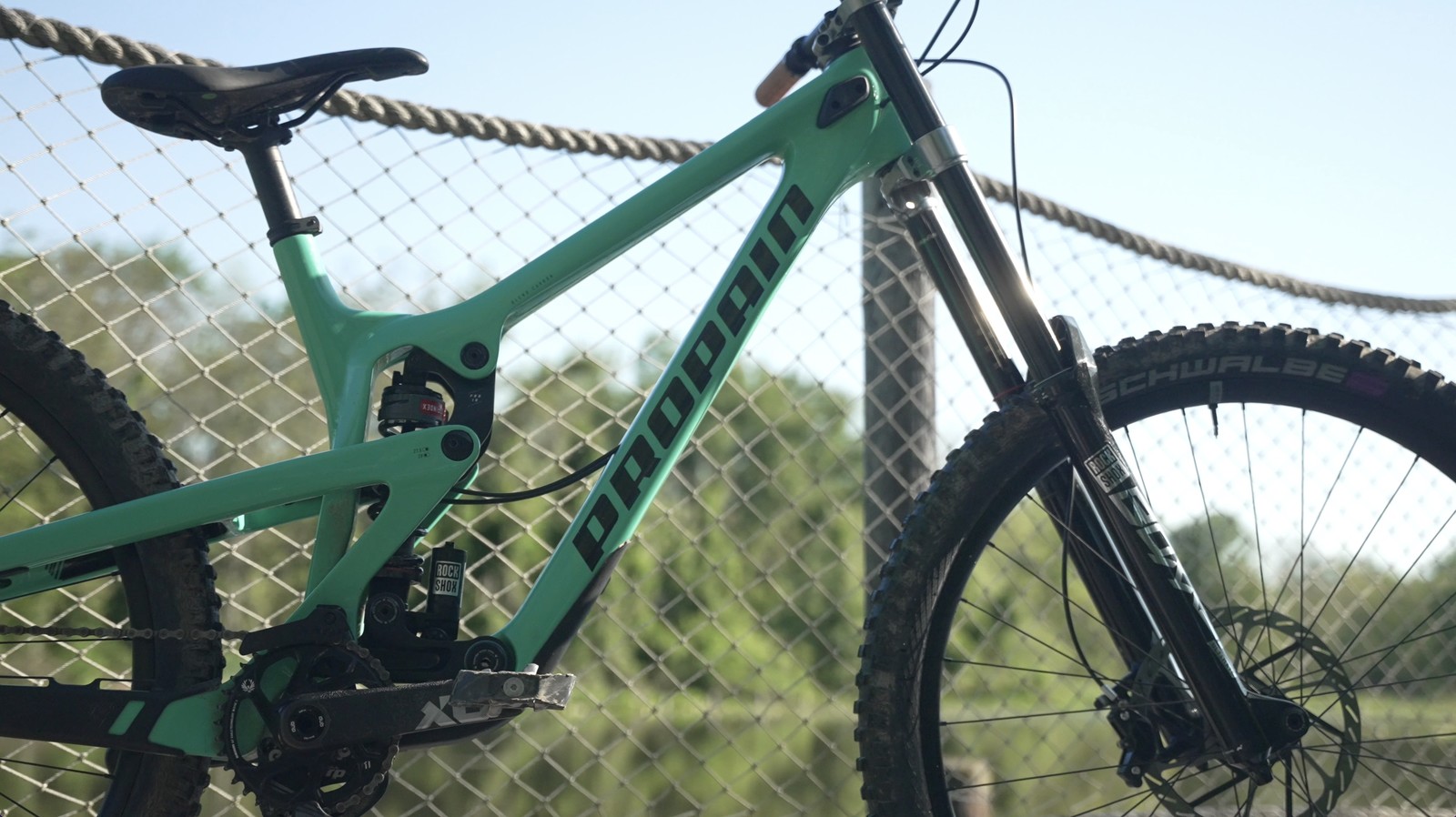
Alf's Impressions
Like Jason and Willem, I was super excited to ride the Rage since it's a niche bike I have never seen in person. Looking at the geometry chart before testing, I knew the size large might be slightly small for my stature. Once on the trails, the Rage did feel a tad small. The tall standover height and steep 79-degree effective seat tube angle also seemed unusual for a downhill bike. Pedaling around the parking lot, the Rage felt more similar to a trail bike, and on the trail, the seat was higher up my inseam than the other bikes. I slammed the seat as low as possible, but it could only go so low before the rear tire would buzz.
Despite feeling a little bit like a bear on a unicycle, the Rage was incredibly fun. The word 'playful' kept coming to mind throughout testing because of how light, snappy and maneuverable the bike rode in various situations. Best suited for bike park riding, the Rage was at home popping off jumps, railing berms, or finding sneaky high lines. It carried adequate speed on flat, smooth trails and provided a firm suspension platform that was highly responsive to rider input.

Where the other bikes promoted a 'plow' mentality through rock gardens, the Rage CF offered more freedom to adjust lines through technical sections while maintaining composure and stability. Unlike Jason, I didn't find the Rage's frame was too stiff or caused the bike to deflect through compressions. The rear suspension was exceptional at recovering from repetitive impacts and tracking the ground. It was also responsive enough that I could load up the suspension to pop over holes and place the Rage exactly where I wanted.
The Rage only struggled to maintain stability at speed over high-frequency chatter or braking bumps. In such situations, the bike would start to lose traction and vibrate out from under me. I felt the most vibrations through my hands and arms, which gives me the impression the sensation derived from the apparent bushing play in the Boxxer Ultimate fork, not from the frame itself. We did re-preload the headset, grease the headset, remove all the air for the fork, and burp the seals to see if anything would improve small bump sensitivity, but nothing resolved the issue. Unfortunately, the bushing issue did take away from the ride experience of teh Rage, and I believe some of our impressions would have been different with a correctly functioning fork.
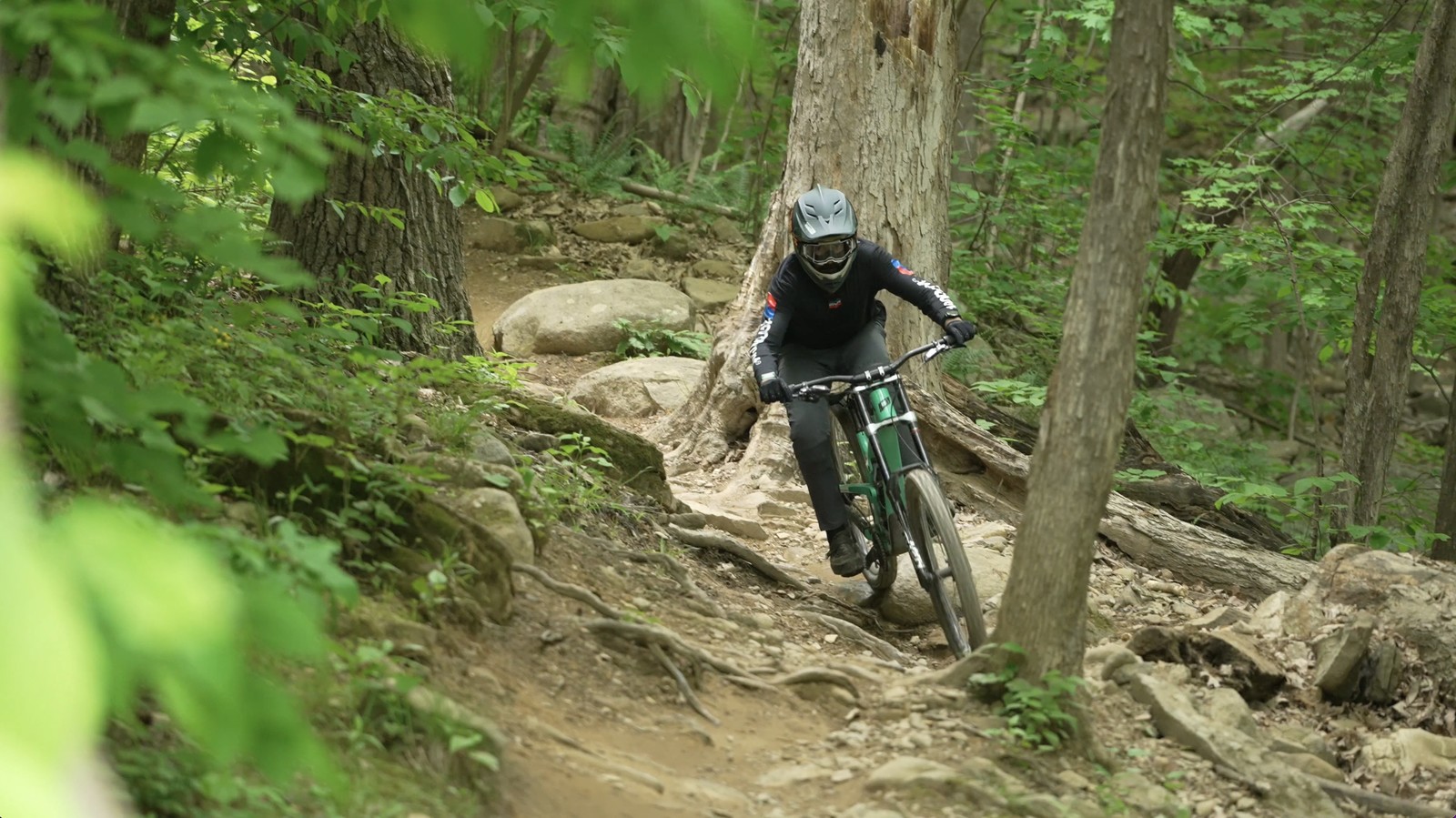
I was concerned about the durability and long-term maintenance of the Rage linkage. Before the end of day one, most of the bolts were loose. By the end of testing, I rode with a multi-tool in my pocket so I could double-check bolts on the gondola. When all the bolts were tight, the Rage was significantly louder than the other bikes, producing an early-2000's Foes or Intense-esque hollow cowbell noise.
Overall, the Rage is ideal for park riders who want a playful bike to stack clips and get stylish. I would personally buy this bike since I am an ex-racer who likes to ride for fun and is less focused on squeezing every bit of speed out of trails. I would just buy the next size up, figure out which bolts need extra Loctite, ensure my fork is issue free out of the box, and then rip it up.
Standout Components
SRAM XO1 7-Speed Drivetrain - Although the Rage used the same SRAM XO1 drivetrain as the Nukeproof Dissent 290, its shifting was much crisper. I'd guess this has to do with the minimal bends and curves the shifter cable makes through the frame, minimizing binding. Regardless, SRAM's 7-speed groupset continues to set the benchmark for downhill drivetrains with exact, quiet, and esthetically pleasing components.

2023 Rockshox Super Deluxe Ultimate Shock - Compared to the previous iteration of the Super Deluxe shock used on the Nukeproof Dissent 290, the new model felt noticeably more controlled and damped across various trails. I actually left all adjustments in the stock middle setting and enjoyed its superb performance throughout testing.

Least Favorite Components
RockShox Boxxer Ultimate Fork - Ironically, the same Boxxer Ulitmate fork was a 'standout' component on the Nukeproof Dissent 290. But on the Rage, the suspected bushing play caused the fork to bind under high-frequency bumps, leading to arm fatigue and a loss of front wheel traction. Luckily, Propain provides plenty of helpful information on their Warranty Page, complete with contact information to resolve an issue like we had.
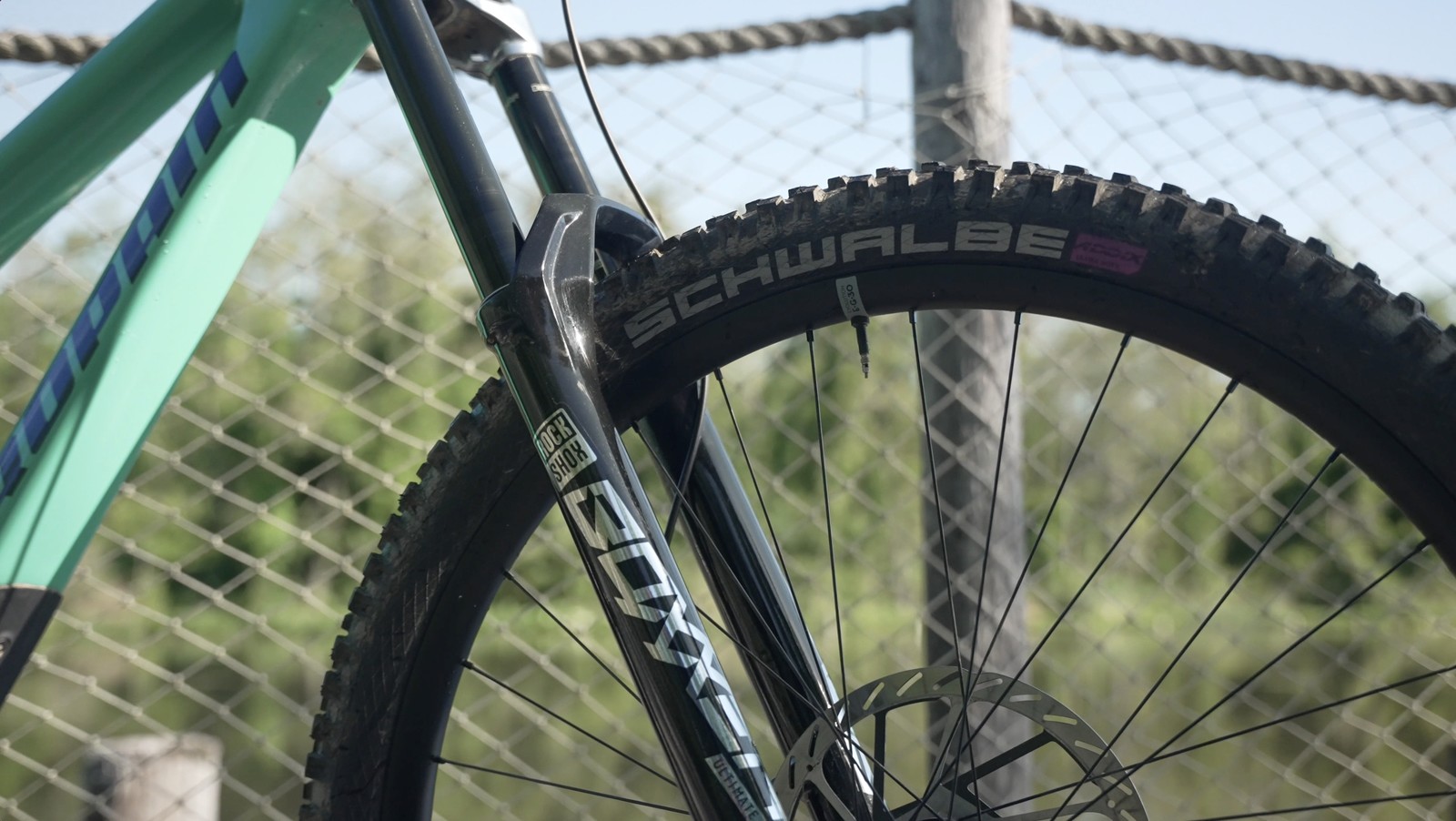
Willem's Impressions
The first time I swung a leg over the Rage, I was caught off guard by the bike's feel. The standover height was very tall, and I felt like I was more 'on top' of the bike instead of 'in the bike.' The seat height had to remain relatively high to avoid buzzing the tire, but it only became problematic when trying to scrub jumps. Regarding size and fit, the Rage fit me better than Jason and Alf, and my arms naturally fell on the handlebars.
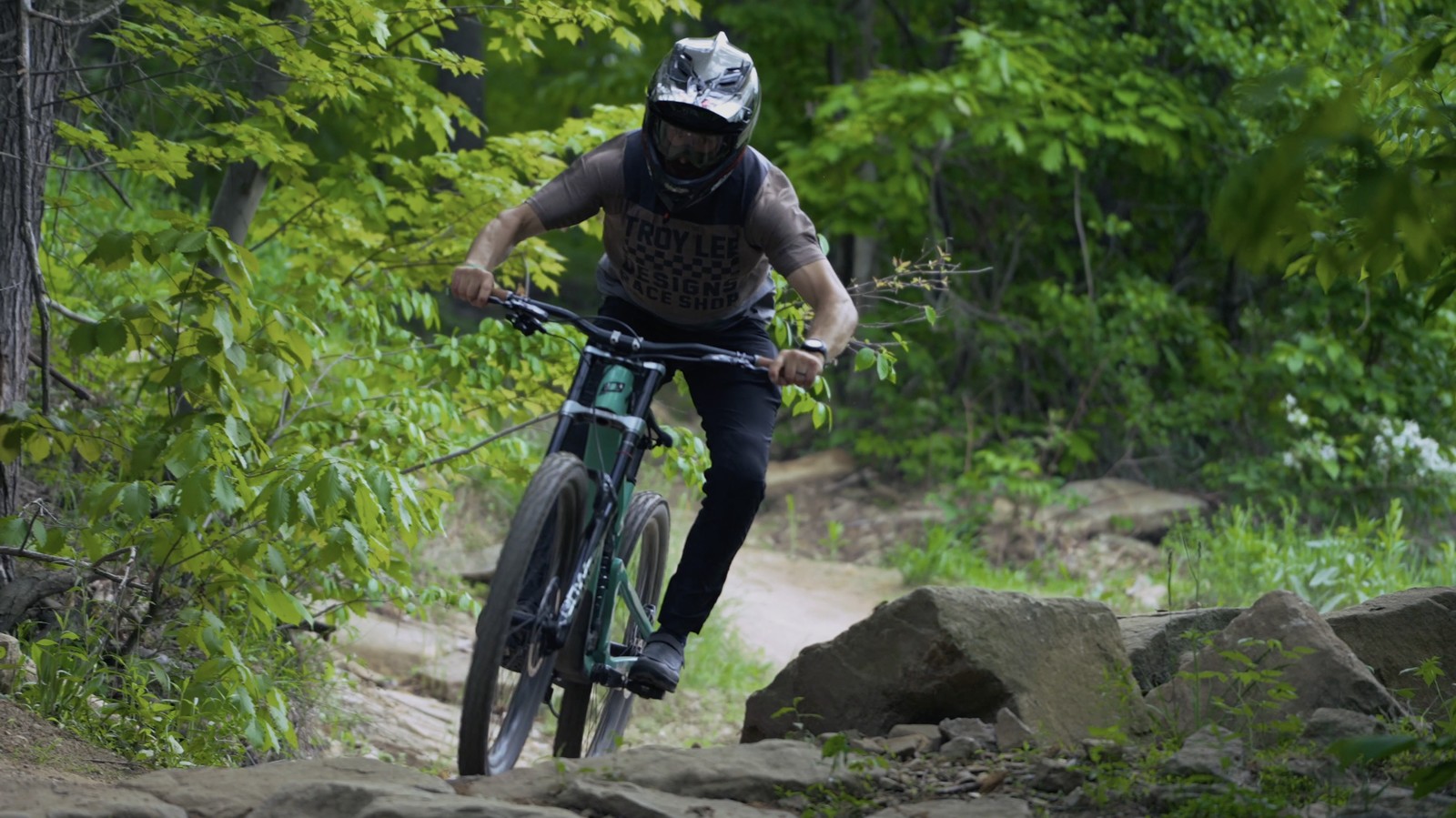
After four days of testing, the Rage was by far the most surprising bike but not always in a good way. It excelled at tapping out the fun meter on jump trails, where it efficiently carried speed and was playful in the air. Compared to the other bikes, the Rage rode with the lightest feel and took less effort to pop off lips and pump through transitions. The rear suspension remained very active under hard braking, providing great control over brake bump-littered flow trails. The suspension was also predictable in big berms, ramping up nicely and providing good mid-stroke support that allowed me to push through turns confidently.
My comfort on the Rage began to diminish as my speed increased, even on flow trails, where the bike would begin to feel twitchy and unpredictable. This sensation worsened exponentially upon charging into Mountain Creek's endless chunky rock gardens. The rear suspension was more than capable of providing a smooth ride through gnarly compressions, but the frame's ride quality seemed to snowball my mistakes into bigger ones. I found it difficult to muster the confidence to charge into tech trails, not knowing how the Rage would respond or what direction it would deflect. To maximize my comfort in such situations, I resorted to lowering my intensity and focusing on my body position with my arms relaxed in preparation for the bike to dance beneath me.
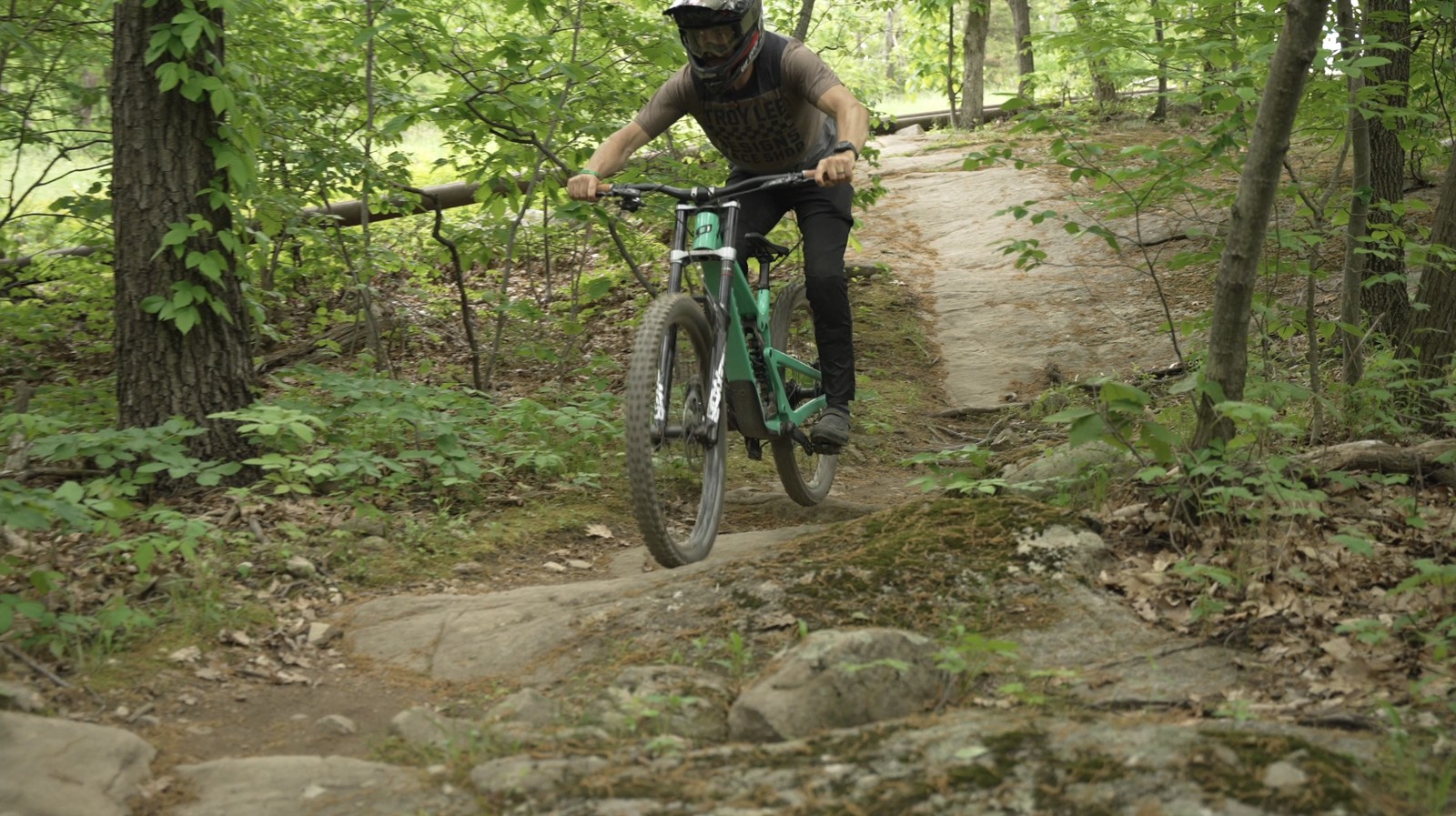
Overall, I don't see myself buying a Rage because I don't prioritize having a bike that's strong suit is flowing down bike park trails. My roots have always been racing, and compared to the other bikes, the Rage was the least confidence-inspiring at speed and in technical sections. But for riders who have a bike park near them and want a bike to flow jump trails and carve off lips, the Rage is the perfect bike.
Standout Component
Sixpack Racing Cockpit - My favorite part of the Rage was the cockpit setup. Usually, I am super picky about my cockpit and always swap out stock cockpit components for aftermarket options. But I would happily leave the Sixpack cockpit on the Rage. The bend and rise of the Millenium handlebar placed me in a comfortable attack position, and the Millenium stem had a minimalist aesthetic that reminded me of Renthal's direct mount stems.
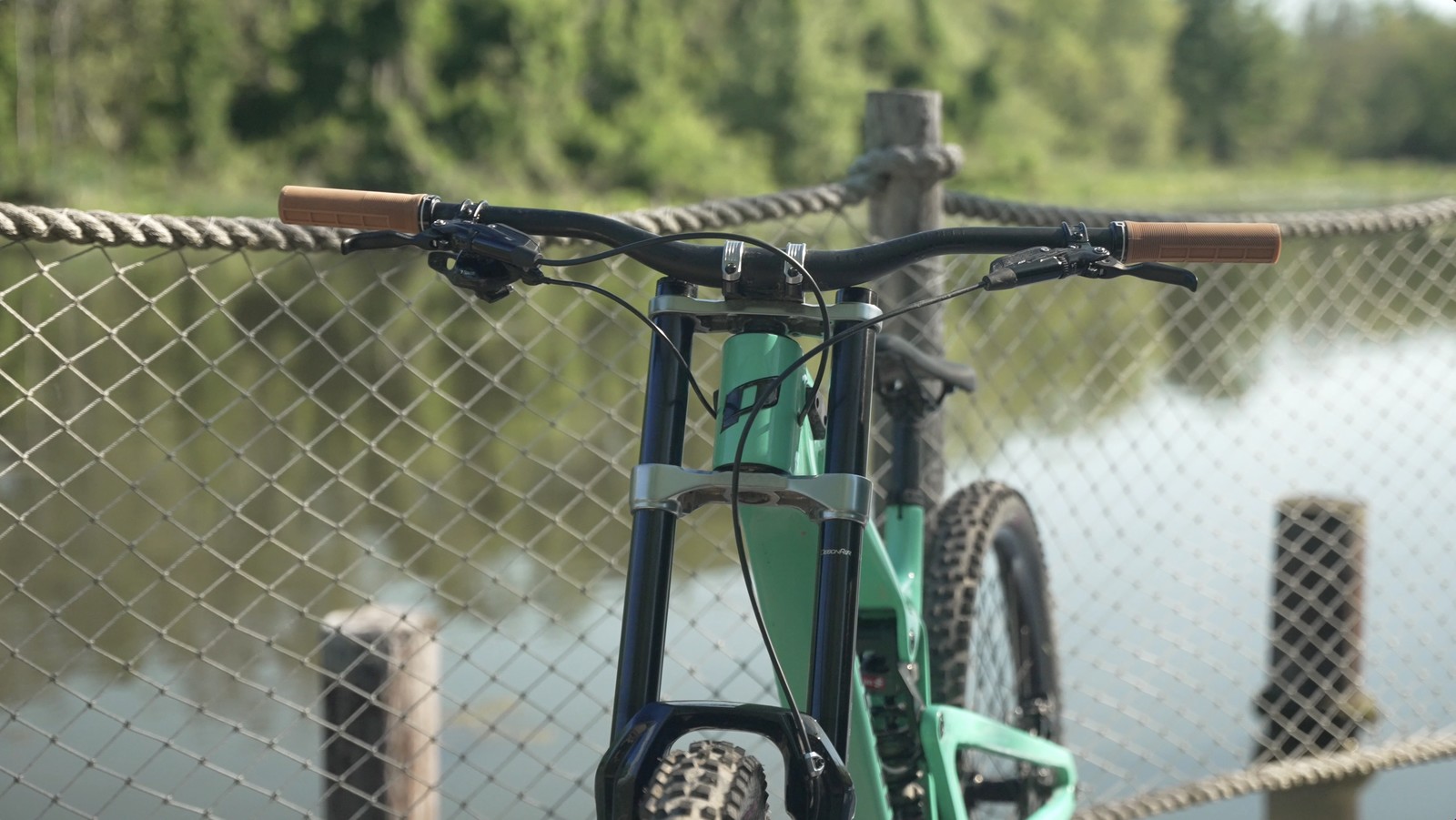
Least Favorite Component
Frame Noise, Maintenance, Ride Quality - As both Jason and Alf already detailed, the Rage was the loudest bike tested, and it seemed the whole linkage would rattle lose every lap. Even with all bolts tight, I was discouraged by the amount of flex remaining in the linkage. Combining the linkage flex with the frame's stiffness, I believe both factors created the unpredictable sensation I felt on trail.

RockShox Boxxer Ultimate Fork - As a FOX guy for the last decade, I'm admittedly biased with my suspension preferences. Unfortunately, the bushing issue with the RockShox Boxxer Ultimate fork didn't help change my biases. Likely a manufacturer defect that can be warrantied, I still found the FOX 40 fork on the Mondraker more familiar and offered that firm, sturdy chassis feel I've become accustomed to over the years.
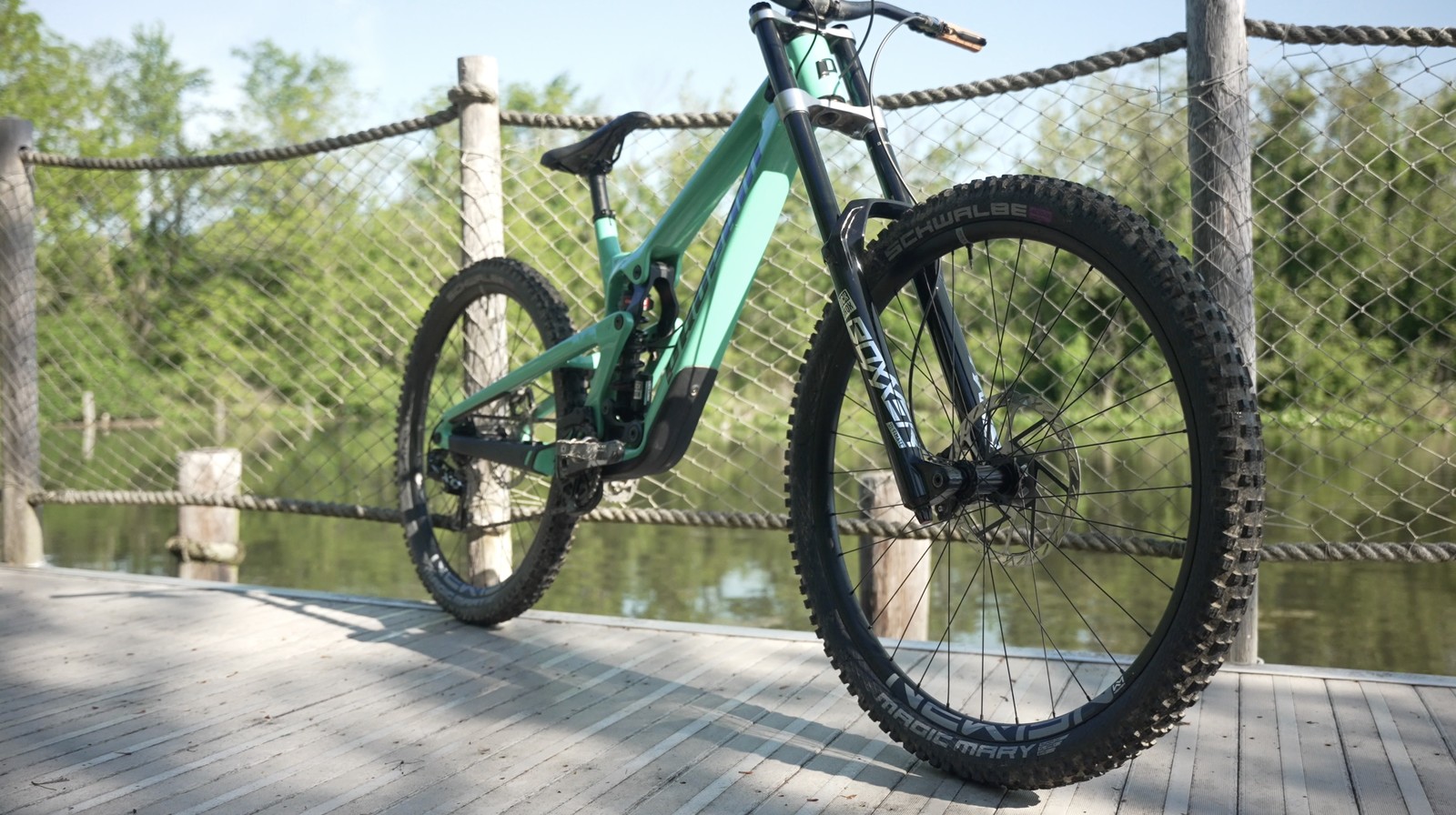
What's The Bottom Line?
Out of the four bikes tested as part of our Downhill Bike Test Session, the Rage stood out as the best bike for ripping machine-built flow trails. With a light, snappy and playful demeanor, the Rage excels at popping off jumps and pumping corners, allowing riders to place the bike exactly where they want in various situations. The PRO10 suspension design easily manages repetitive, harsh compressions and offers a supportive platform that is responsive to rider input. However, the Rage's frame left us yearning for additional compliance. In demanding sections, the bike tended to deflect and bounce us off line, requiring additional energy to maintain composure. Additionally, the Rage was the loudest bike tested, and its linkage bolts demanded constant supervision to ensure they didn't loosen. While the Rage is not our first choice for a downhill race bike, it is a solid option for everyday riders looking to max out their stoke meter on flow trails and attack extreme lines at the bike park.
For more information on Propain's Rage CF, head to propain-bikes.com
For more downhill bike content, check out our three-episode Test Sessions series: Episode 1, Episode 2, Episode 3. And make sure to add Mountain Creek to your list of must-visit bike parks. You won’t be disappointed!









